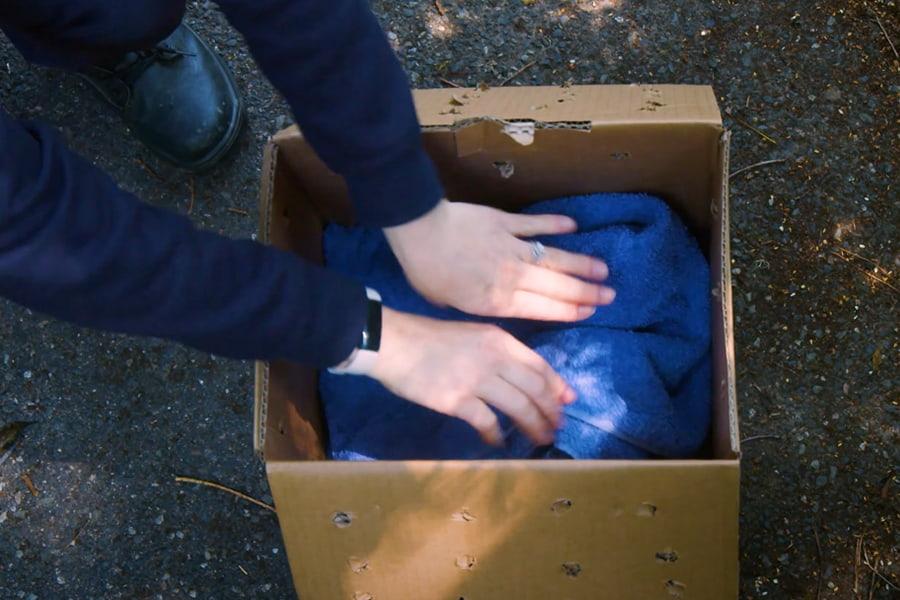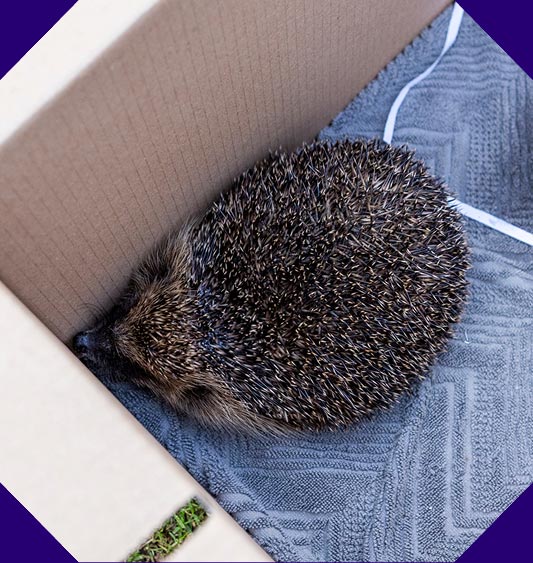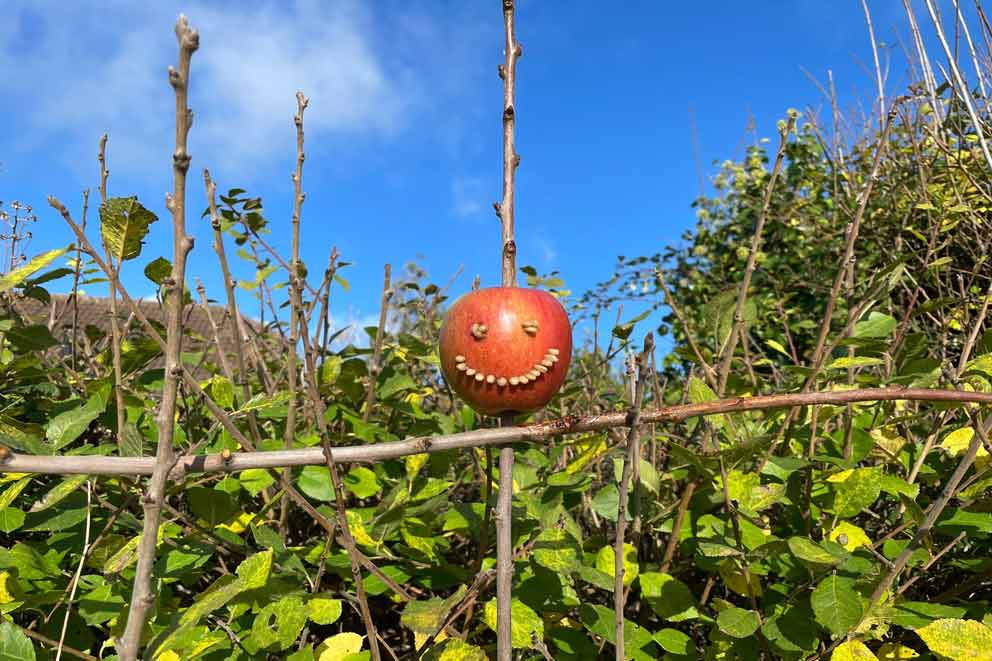Make your own wildlife rescue box
Learn how to make your own wildlife rescue box, so you’re always prepared to help any sick or injured small, wild animal in need. On this page, we’ll show you how simple it is to create, and how impactful it could be for local wildlife.
- Suitable for: Adults, and children with their adults!
- Season: All year round

It’s sometimes difficult to tell if a small animal needs your help.
For example, in spring and summer it’s common to find baby birds on the ground. Birds take far better care of their babies than humans can, so keep your pets away and follow our advice on how to tell if a baby bird needs your help.
If you’ve read our advice on what to do with sick and injured wild animals and think you need to step in, the quickest way to help an animal is to take it straight to a vet. By using a wildlife rescue box to transport it, you could save its life.
Follow our easy-to-make guide and learn how to put together your ready-to-go rescue box to store nearby.
But remember, don’t put yourself at risk to rescue the animal. Only help if it’s safe to do so. If it’s not, report your concern to us.
jump to:
Spotted an injured animal?
More often than not, the quickest and best way to help a small animal is to take it to your nearest vet. This will free up our rescuers to get to the animals at risk of cruelty and neglect who need us most.
Wildlife rescue box
Instructions
-
1
Cut air holes into your box: Draw small holes the diameter of a pencil on all four sides of your box, or on the lid, and cut them out.
Make sure you’ve cut out enough (lots of small holes are better than a few large ones) so that rescued animals can breathe. Four rows of five holes per side is a good average.
-
2
Add in the towel: Place your towel or towels on the bottom of the box, to keep the rescued animal warm and comfortable.
You can also include an empty hot water bottle if you have one. That way, if you do rescue an animal, you can fill the hot water bottle and put it beneath the towel for extra warmth (but DON’T put it on top of the towel, or against the animal's skin, as it can burn them).
-
3
Add in the gloves: Put your old gardening gloves into the box, along with your gardening clippers and long-sleeved top if you have them. This keeps all the items in one place should you need them.
-
4
Store the box in an accessible place: It’s best to store your wildlife rescue box in your car, shed, porch or garage – somewhere you can grab it quickly and easily, if you happen to find a sick or injured wild animal in your garden, or out and about.
What you'll need
A strong, medium-sized box
One or two old towels
Strong gardening gloves: to protect from bites, scratches and illness when picking up animals – always wash your hands after.
Optional:
Long-sleeved top: to wear when you rescue an animal, in case they scratch.
Old garden clippers/secateurs: in case you find a small animal tangled in litter, netting or brambles.
Empty hot water bottle
Watch our video for more advice on how to rescue and transport small mammal wildlife.
I prepared a box and placed all essentials like blankets, gloves and long-sleeved top inside, I will place it in the boot of my car.
What to do if you find a sick or injured animal
Be ready to put your rescue box into action. Read our guides on how to identify if a small wild animal is sick or injured, and how to safely pick it up and transport it to your nearest vet.
What to do if you find a dead small animal
Unfortunately, there may be sad occasions when you find an animal that’s passed away, whether from an accident, injury or natural causes.
If you find a small animal that’s dead, or appears to be, the best thing you can do is report it to your local council (find your local council here). Depending on the species, inform the following organisations, to help monitor local wildlife welfare:
- Bats: report the bat to the Animal & Plant Health Agency.
- Badgers: report the badger to the Badger Trust Reporting Centre.
- Birds: report the birds to Defra.
- Garden animals: report animals, such as hedgehogs, amphibians and birds, to the Garden Wildlife Health project.
- Marine life: report the marine animal by calling:
- The Cetacean Strandings Investigation Programme (CSIP) if you’re in England or Wales: 0800 652 0333
- The Scottish Marine Animal Strandings Scheme (SMASS) if you’re in Scotland: 07979 245893





